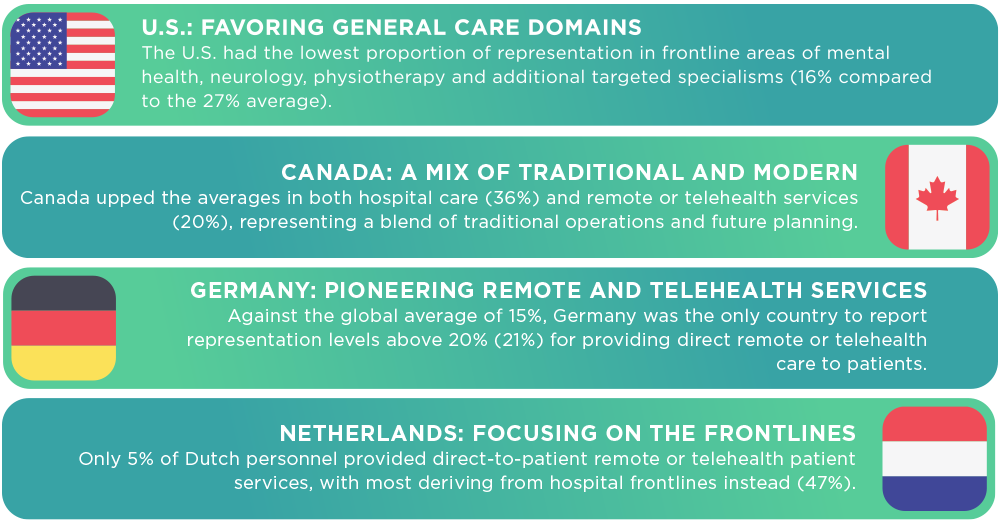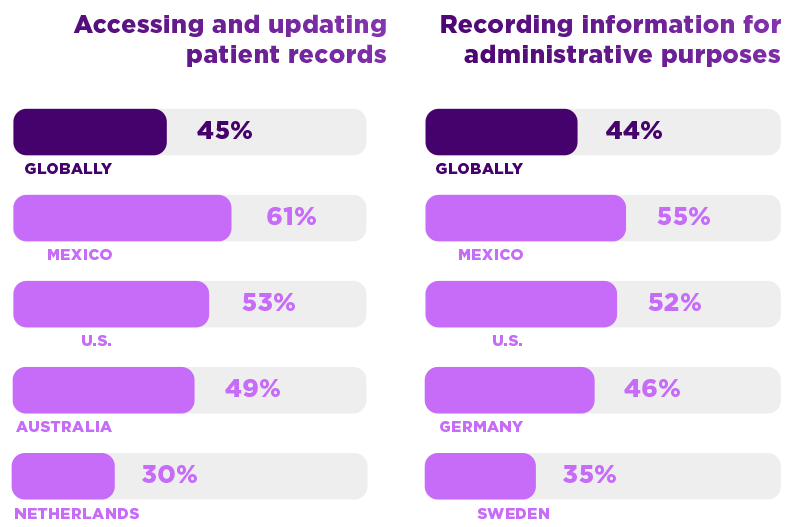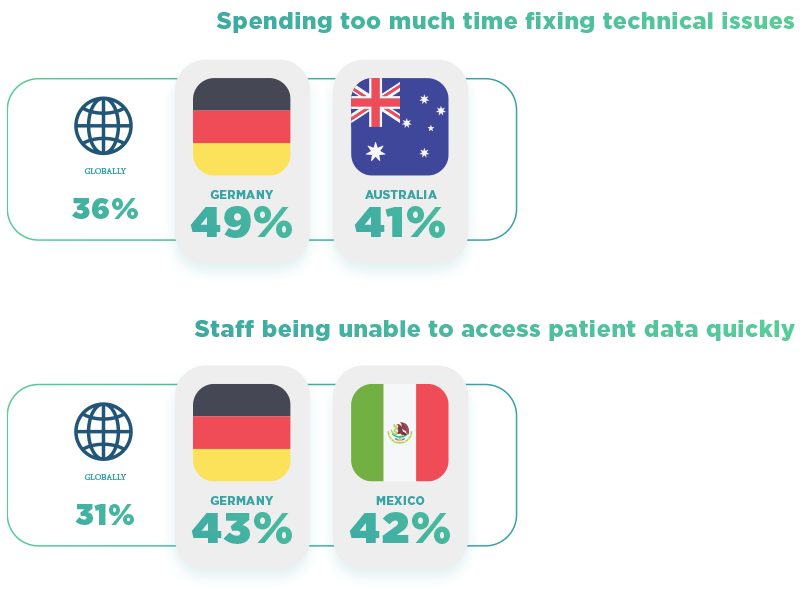
The digital transformation of healthcare can be traced back to the 1960s. Although computers were somewhat nascent, even back then, doctors and physicians realized that technology could be helpful in tasks such as documenting and retrieving patient records.
Skip ahead to 2023, and the latest SOTI industry report, The Technology Lifeline: Charting Digital Progress in Healthcare, reveals that 48% of healthcare organizations globally would like to digitize and automate the collection of data during patient visits. Furthermore, 45% believe the process of accessing and updating patient records would benefit by shifting from manual to digital.
Although the digitization of healthcare began in the same decade as the first moon landing, and the pandemic accelerated it, our report demonstrates plenty of progress still to make.
Healthcare organizations are constantly digitizing processes to ensure faster, more accurate patient information collection. They increasingly look to Enterprise Mobility Management (EMM) solutions to address downtime and security concerns.
You can check out some of the report highlights below or click the link for your free copy.
GET YOUR FREE COPY. NO EMAIL ADDRESS REQUIRED
Different Priorities for Different Countries
Delivering quality, timely healthcare is universal. But the focus of healthcare and the types of IT support needed to provide it varies by country. From the report:

The list above includes less than half of the countries surveyed. To see the full list of healthcare technology priorities by country, download the report and check out page 5.
Each country looks through a different healthcare technology lens, even those that are next to each other or within the same region. Some countries view remote or telehealth as a priority. Others want to focus on supporting the conventional practice of “going to the doctor”. And others still are looking to use technology to alleviate hospitals still buckling under the strains of the past few years.
The combination of budget and organizational buy-in helps direct what technology is invested in and ultimately implemented. It guides which new apps, devices and processes will be deployed and shines a light on the potential problems associated with integrating this new technology.
Healthcare EMM to Support Task Automation
Last year, the 2022 SOTI healthcare report revealed that a key area of IT spending in healthcare was focused on automation. Organizations around the world were looking to identify which processes or tasks could make the shift from manual to digital. In fact, a separate report determined that in the U.S. alone, the healthcare industry could save $16 billion (USD) through automation.
Almost everyone (99% to be precise) interviewed for SOTI's 2023 report confirmed at least one manual task in their organization would benefit from automation. The image below reveals global support for automating specific tasks, followed by the highest and lowest-ranked countries.

The charts above reflect two of the four critical tasks healthcare organizations believe would benefit from automation. To see the full list, download the report and view pages 12 and 13.
What do the tasks above have in common? They involve the collection and documentation of data and creating records to access later. They also run the risk of being performed incorrectly when done manually. A busy doctor accidentally inverts two numbers and suddenly, a young 18-year-old becomes a young-at-heart 81-year-old.
Equally important, if not more so, is that these manual processes affect the patient’s experience. Waiting for doctors or physicians to jot down or pull up data during a visit takes away valuable time that could be spent diagnosing, treating and providing care. The length of the average doctor’s appointment in the U.S. is between 10 to 15 minutes, and it doesn’t benefit anyone, the doctor, the patient or the organization, to lose time to manual tasks which could be automated.
Legacy Systems Are Problematic
One of the key findings in The Technology Lifeline: Charting Digital Progress in Healthcare is that healthcare IT professionals believe legacy systems severely impact their ability to do their jobs properly. Unfortunately, 99% of respondents confirmed their healthcare organizations are using legacy systems daily.
Globally, 37% of respondents believe legacy systems leave their organization more vulnerable to cyberattacks or security breaches. That aside, there are other issues associated with legacy systems:

These are only some of the legacy system issues healthcare IT professionals deal with regularly. In fact, there are six more. Download the report and go to page 26 to learn more.
Optimized integrations ensure quicker transformations and save time. Time is critical when you consider that healthcare employees lose an average of 3.4 hours in a normal week due to technical or system difficulties.
Technology should work. But legacy systems are prone to failure due to age or obsolescence, and the integration of new technologies into old systems isn’t always smooth, effective or possible. Organizations must move away from legacy systems to implement new technology, and do so efficiently, with the limited time and resources available.
Security is Always a Priority
Healthcare data breaches are becoming more common. A separate report found that in 2016, there were 329 reported healthcare data breaches. In 2022, there were almost 700. The number of breaches doubled in only six years. Also, something to keep in mind is that those are reported breaches. Who knows how many went undetected?
The 2023 SOTI healthcare report also revealed a rise in data leaks and attacks compared to the 2022 report:

For a full list of the top security concerns of healthcare IT professionals, download the report and see pages 21-23.
The proliferation of unmanaged security devices outside the umbrella of a healthcare EMM solution poses a great security risk. Whether it’s a legacy device that can’t be managed or an employee using their personal device to access sensitive data, a lack of device management is the same as device mismanagement; and that’s a problem.
Overall, 97% of respondents admit to having at least one security concern, with the theft of patient records topping the list. The security problem has yet to be solved; every new device is another vulnerable endpoint. Every new app is another source of confidential information that can potentially be stolen. If device management is not addressed, digital transformation can put healthcare organizations at risk.
Download Your Free Copy of The Technology Lifeline: Charting Digital Progress in Healthcare
The report also highlights:
- Additional priorities for healthcare organizations
- New technologies IT professionals are focusing on
- Why the benefits of automation are still unclear



